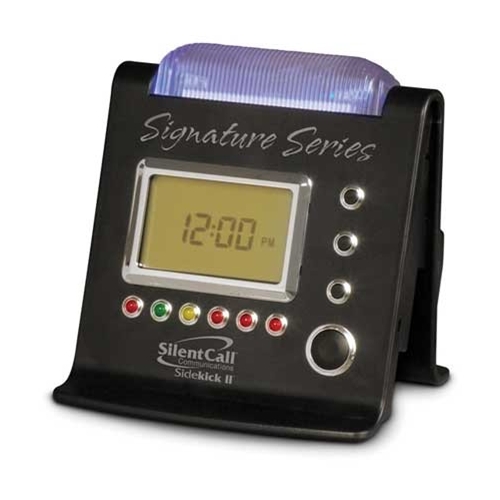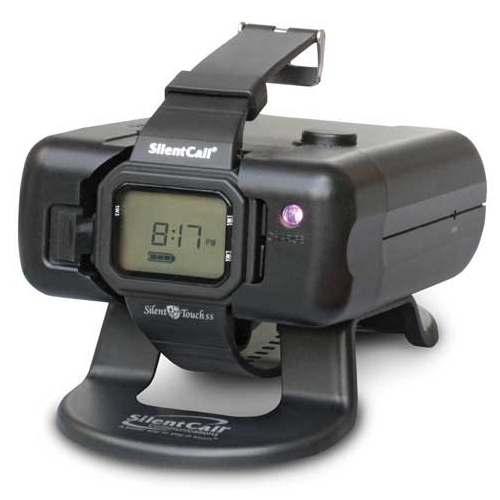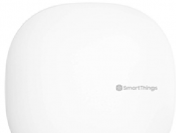 For my friend Julie’s 70-year-old mother, a visual alert system has made it possible for her to continue living in her own home so she didn’t have to be uprooted and moved to an assisted living facility. Recently widowed, Julie’s mother is in good health except for some hearing loss. Unfortunately, the impairment affects her ability to hear everyday sounds like a ringing telephone, buzzing alarm clock and chiming doorbell, and Julie worried about her ability to live independently.
For my friend Julie’s 70-year-old mother, a visual alert system has made it possible for her to continue living in her own home so she didn’t have to be uprooted and moved to an assisted living facility. Recently widowed, Julie’s mother is in good health except for some hearing loss. Unfortunately, the impairment affects her ability to hear everyday sounds like a ringing telephone, buzzing alarm clock and chiming doorbell, and Julie worried about her ability to live independently.
For people like Julie’s mother who are hard of hearing or deaf or deaf/blind, ordinary daily activities can be a challenge. Hearing loss can result in missed deliveries (didn’t hear the doorbell), missed calls (didn’t hear the phone ring) and missed appointments (didn’t hear the alarm clock). Julie also worried about her mother’s safety and feared that she would sleep through an emergency like a fire or break-in.
A Visual and Vibrating Solution
 The solution for Julie’s mother was a visual alert system by Silent Call that uses both blinking lights and pulsating vibration to signal household events. They picked the Sidekick II system because it has an optional bed shaker that will awaken mom if there’s a nighttime phone call or emergency, as well as in the morning when it’s time to get up.
The solution for Julie’s mother was a visual alert system by Silent Call that uses both blinking lights and pulsating vibration to signal household events. They picked the Sidekick II system because it has an optional bed shaker that will awaken mom if there’s a nighttime phone call or emergency, as well as in the morning when it’s time to get up.
Choose the Alerts You Need
A basic visual alert system consists of a receiver and one or more transmitters, including these popular transmitters:
- Doorbell
- Telephone
- Smoke detector
- Fire
- CO2
- Sound monitor (serves as a baby alarm)
- Door or window activity (detects break-ins)
The transmitters communicate wirelessly and you can add as many as you need. When activated, the transmitter sends a digitally-coded signal to the receiver. Each signal has a function code such as Fire, Sound, Door, Telephone, etc. which is displayed by the receiver though a unique pattern of lights (or vibrations, depending upon the receiver) which identify which transmitter has been activated. Some receivers also display a symbol that helps identify the transmitter.
Choose the Right Range
 If your home is large or you want to be able to receive alerts when you are in the backyard, the 418 MHz Silent Call Signature series is best because it has a range of up to 2,000 feet. In fact, these systems are even great for non-hearing impaired people who spend a lot of time outdoors and don’t want to miss a call or visitor. For apartments and smaller homes, a 318 MHz receiver with a 100 foot range works fine. Just be sure that the transmitters you select are compatible with the MHz of your receiver.
If your home is large or you want to be able to receive alerts when you are in the backyard, the 418 MHz Silent Call Signature series is best because it has a range of up to 2,000 feet. In fact, these systems are even great for non-hearing impaired people who spend a lot of time outdoors and don’t want to miss a call or visitor. For apartments and smaller homes, a 318 MHz receiver with a 100 foot range works fine. Just be sure that the transmitters you select are compatible with the MHz of your receiver.
Happy and Independent
Julie says the multi-functional Silent Call visual alert system allows her mother to live happily in her own home and gives everyone else in the family peace of mind knowing that mom is safe. It wakes her up in the morning, protects her from life-threatening emergencies, and alerts her of visitors and phone calls. Mom has even been reinstated as everybody’s favorite babysitter, now that her visual alert system reliably signals her if the baby wakes up crying.





